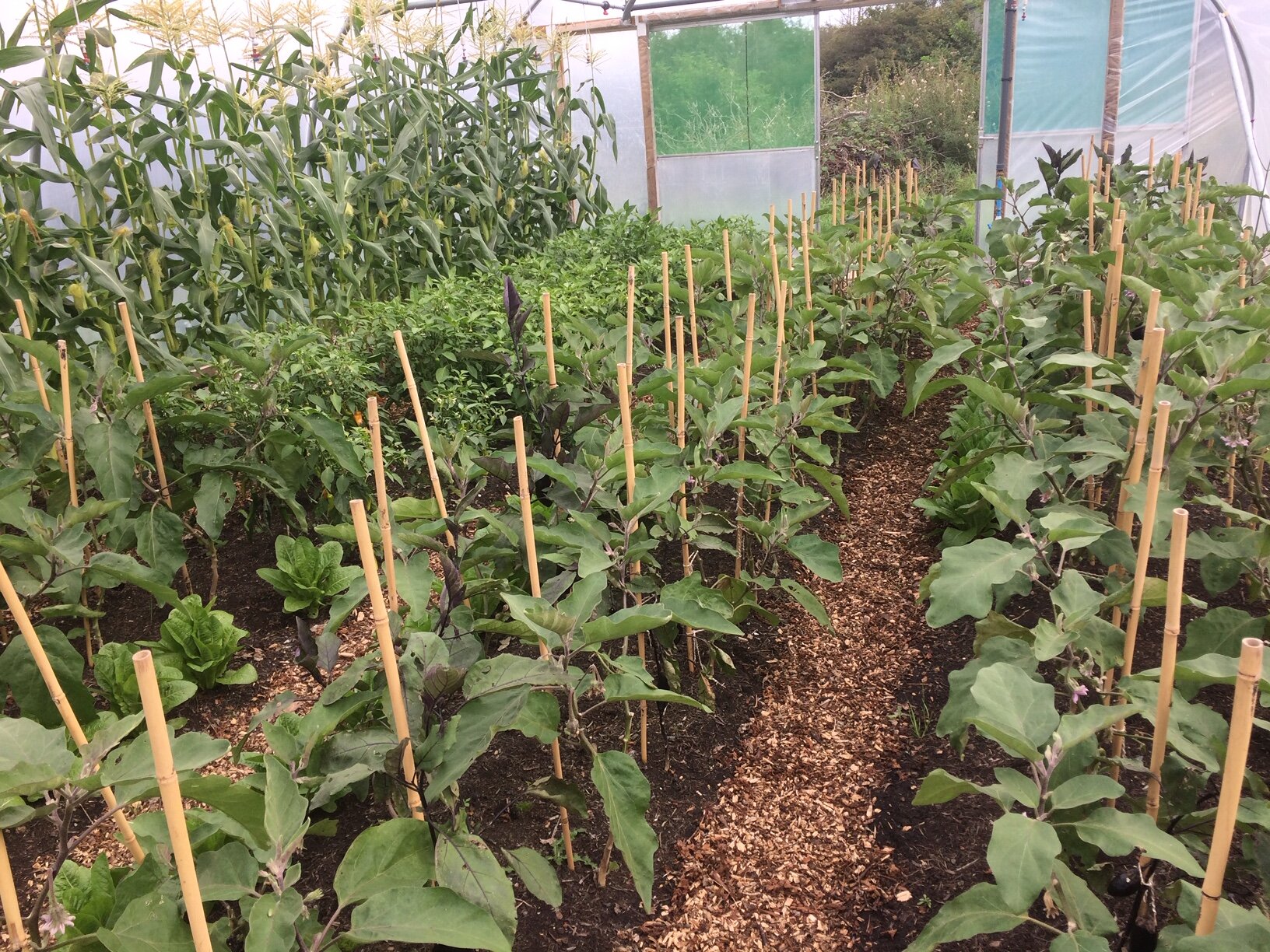OUR MARKET GARDEN
Established in 2017, our 2.5 acre site houses 3 productive polytunnels, intensively cultivated vegetable beds, a mixed orchard, 1 acre wildflower meadow & 4 ponds. We have planted 100 metres of native mixed hedging, over 100 trees and created diverse, herbaceous borders and a 100 metre wildlower track for pollinators.
Our fruits & vegetables have great flavour, grown naturally with no chemical inputs, all whilst enhancing soil health, increasing biodiversity and storing carbon in to the soil. It is called ‘Regenerative Agriculture.’
We converted the field from rough grazing to a productive vegetable garden, using the NO DIG method. We have achieved everything by mulching with cardboard, compost and woodchip and feeding the soil with compost!
Paths are made of woodchip to improve water retention and supress weeds. There are no wooden barriers or bed edges - these just provide cover for slugs! The 3 polytunnels offer shelter and warmth for tender crops like tomatoes, aubergines, cucumbers and in the winter, mixed salads, broad beans and spring cabbages. A mixed orchard (apples, pears, plum and quince) is planted in rows with fruit bushes and rhubarb.
In summer the meadow is full of wildflowers, nitrogen-fixing species like clover and vetch and is home to a great number of invertibrates, small mammals and a visiting barn owl and buzzards. Year on year we are seeing big increases in the number and variety of moths and butterflies at the site, with marbled whites, commas, speckled woods, Holly blues, meadow browns, ringlets, chimney sweepers, small skippers, small coopers, magpie moths and orange tips being the highlight of the year.












